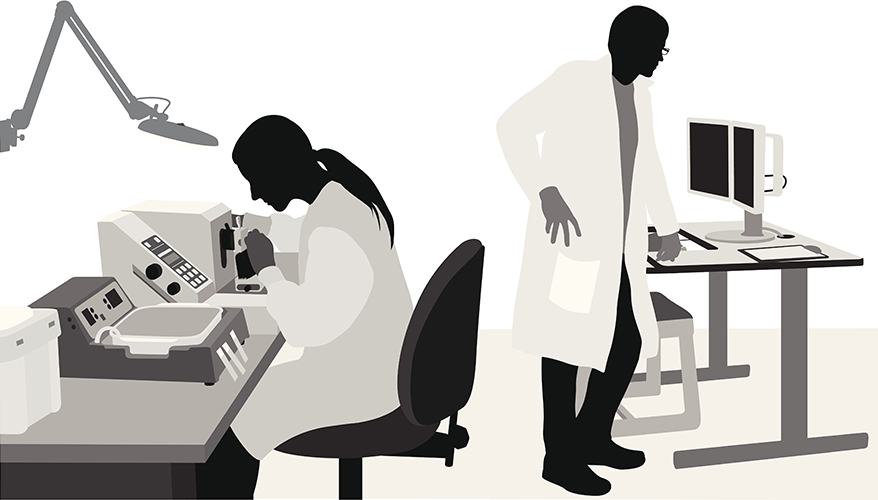Sean Carberry

The latest strategy document to roll out from the 2022 National Defense Strategy is the National Defense Science and Technology Strategy, which focuses on Defense Department’s technology priorities and the future of the research and engineering enterprise, according to the document and a senior official.
The strategy states that in the face of growing private-sector investment in science and technology and growing adversary capabilities, the Defense Department “must be more proactive with its engagements with the private sector to make the right investments to capitalize on emerging technologies, as well as to preempt adversary attempts to do the same by protecting critical and emerging technologies early in the development cycle.”
The strategy lists three lines of effort to achieve its objectives: focus on the joint mission, create and field capabilities at speed and scale and ensure the foundations for research and development.
During a briefing with reporters, Dr. Nina Kollars, advisor to the undersecretary of defense for research and engineering, said under the first line of effort, “the department will focus on the joint mission by investing in information systems and establishing processes for rigorous threat informed analysis.”
With the best data and data systems, the department can make better informed investments in science and technology, she added.
Under the second line of effort, the department will foster “a more vibrant defense innovation ecosystem, accelerating the transition of new technology to the field in scalable ways,” she said.
“Third, the department will ensure the foundations for research and science by continuing and expanding upon our efforts to recruit, retain and cultivate talent, revitalize our physical infrastructure, upgrade our digital infrastructure and nurture stronger collaboration across all strategic stakeholders,” she added.
“The strategy itself is meant to be a messaging document to say that this is where we will continue to put additional effort,” she said. “What is particularly important to the [department] at this point is ensuring that we have the investments in modeling and simulation, rigorous analysis.
All of those elements really, we think, will help us identify what it is exactly we should be getting after in terms of budgetary investments, which then necessarily make it easier to prototype experiment and transition.”
The strategy lists several steps the department will take, such as to establish “a methodological process” to prioritize investments in capabilities with the most potential to meet warfighter needs; “amplify and accelerate” capacity to turn joint warfighting concepts to capabilities; make the needed changes to foster a “more vibrant ecosystem” to grow research partnerships; revise technology protection protocols; and increase partnerships with traditional and non-traditional defense and technology companies.
The strategy states that the offices of the undersecretary of defense for research and engineering and undersecretary of defense for acquisition and sustainment will collaborate “to develop new processes, procedures and forums to drive close collaboration with the military services’ and OSD acquisition and sustainment communities to spearhead rapid fielding of capabilities at speed and scale.”
As it is a strategy document, it focuses on aspirations and guidance while the forthcoming implementation plan, due to Congress within 90 days, will illuminate how the department will move forward with the strategic objectives, Kollars said. However, the expectation is that much of the implementation plan will be classified.
Although the strategy is new, many of the concepts in it, relating to the rapid investment in new technologies and standing up new offices and vehicles to accelerate the prototyping and fielding of new systems, are not. That raises questions about what lessons the department has learned from past efforts and what it will do differently going forward.
“I suspect those of us who've been in this space know that the high-level guidance often has to be applied in very specific and incremental ways,” Kollars said.
She noted the evolution of the Defense Innovation Unit as an example of changing to meet evolving threats.
“The Defense Innovation Unit began as an experiment with a tremendous set of thought leaders and has evolved over time to include elements like the National Security Innovation Network,” she said. “The problem will always continue to evolve, and we try to meet it every step of the way.
The strategy puts heavy emphasis on deepening collaboration and cooperation with partners and allies and accepting more risk in doing so, Kollars noted.
“There can be a tension with how we share with our partners and allies,” she said. “But there are a number of initiatives going on inside the Department of Defense that are aimed at getting at new policy solutions to making sure that our technology can be interoperable with our partners and allies and sharing with our partners and allies while minimizing accidental technology transfer.”
In terms of funding and authorities for the strategy, Kollars said that the strategy is aligned to the fiscal year 2024 budget request and does not seek any additional authorities. “Going forward, we will allow the defense planning process to make additional adjustments as necessary.”
No comments:
Post a Comment